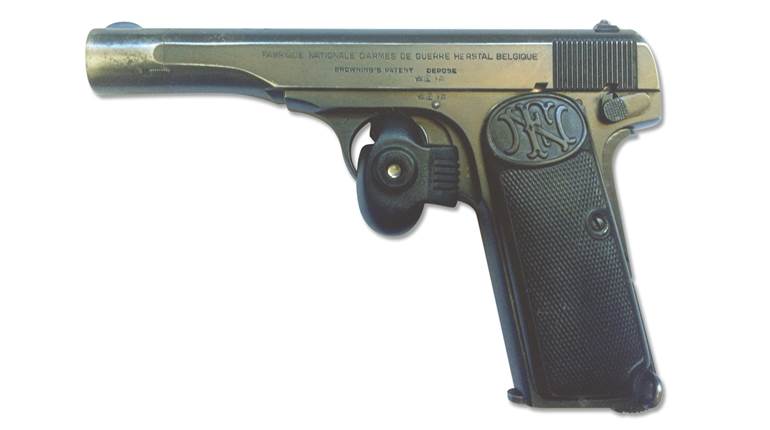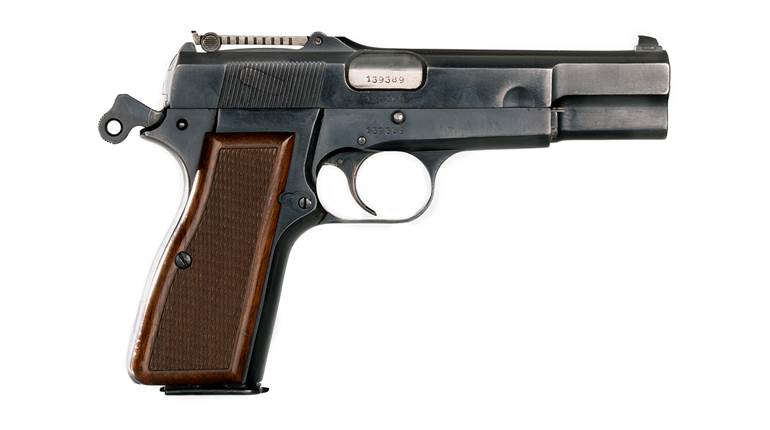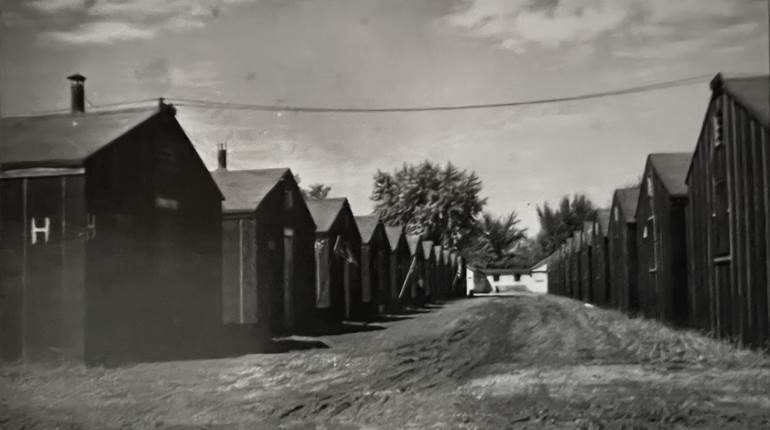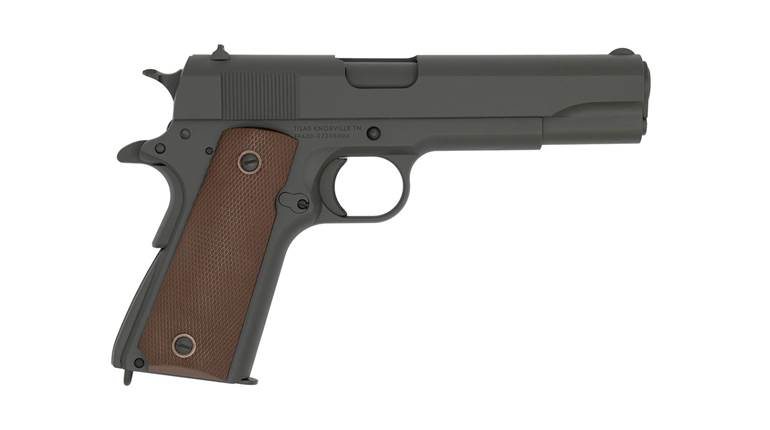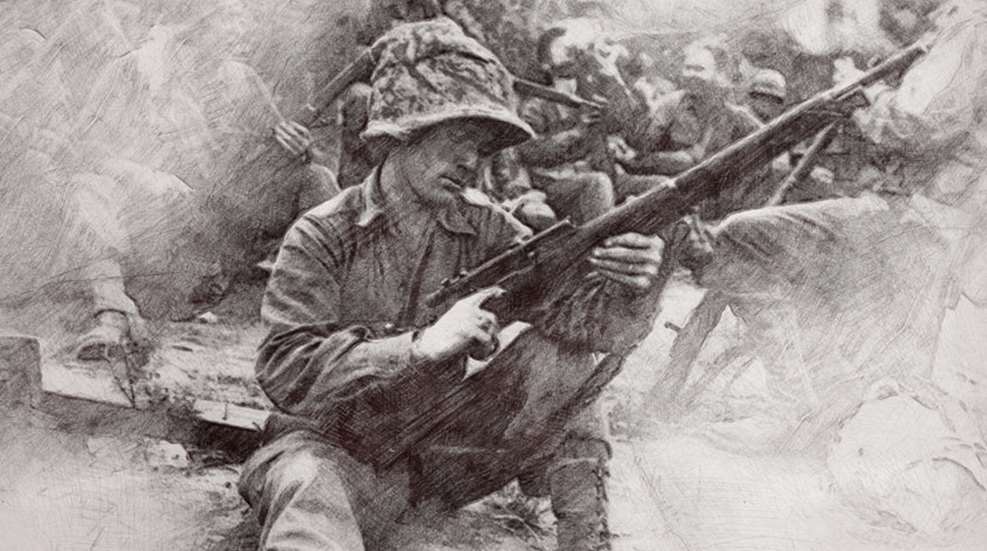
From the July 1944 American Rifleman.
Freckle-faced, redheaded PFC James J. McGill, of Philadelphia, had a lot of respect and admiration for his lieutenant. The lieutenant liked him, too. McGill was slight, wiry, a 20-year-old with a wide grin but he was already a veteran—and darned good with a rifle—so good, in fact, that the lieutenant had picked him as a sniper.
He knew he’d picked the right man as soon as he placed that scope-sighted ’03 in the kid’s hands. The kid liked that gun. It was very much like the Springfield he’d used on the club range back home. He’d always wondered what he could do with a gun like that, with a scope. He’d find out, now! This was going to be more like it. Up to now, there’d been plenty of shelling, plenty of being shot at, plenty of shooting, too—but at pretty indefinite targets. The only Jerries McGill had really seen so far were dead ones, and, while that was all right with him, as a sniper maybe things would be different.
He’d come a long way since those days on the club range. He remembered how pleased his sergeant had been that day, during Basic, when McGill shot 185 for an Expert qualification. Later, he’d joined the 34th as a replacement—a good outfit, the outfit that stormed Hill 609 in Africa, and was now sweating it out in front of Cassino. McGill had learned a lot since joining the 34th. On the way up here to the Gustav Line he’d been out on a number of patrols, learned how to take cover, learned to work as a scout, learned to live in the mud, and to climb mountains, and to eat and sleep under fire. He wasn’t a rookie now; he was a G.I. Joe, seasoned and proved.
They shoved off at dawn, McGill and the lieutenant, along a path just underneath a ridge. McGill was out to the right and above the lieutenant; the rest of the squad was behind and below them. A flock of Jerries loomed out of the mist before them, out of nowhere—a returning patrol, maybe, or a guard of riflemen around a machine gun nest.
McGill flopped prone, caught the leading Jerry in his scope and fired. Range, 250 yds., guessed. The shot went low, kicking dirt at the German’s feet. Shot number two was another miss, at nine o’clock. Nuts! Settle down, McGill! Ah-h, that’s better! Third shot, a bull! One Jerry down, the others scattering.
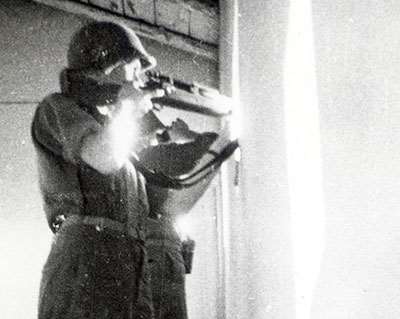
But he was on the target now. Another Jerry got it, and another, the last one only nicked. The lieutenant got one, too. Then a machine gun opened up, not at McGill but at the squad. The lieutenant dropped back, hoping to help the squad work its way forward. Out on the flank, McGill waited.
Six hundred yards, about, to that machine gun nest. Through his scope, McGill could see the Germans crouched around their gun. He took his time. First shot—a hit. Second—he wasn’t sure. No time for a third; hell broke loose. McGill hugged the dirt under a hose of machine gun fire. It was some consolation, though, to see that, while Jerry sprayed him, the squad below was free to move again. They were moving, coming forward in short dashes.
The machine gun fell silent and McGill lifted his head. Jerry was on the run. Jerry didn’t like that position so well now! McGill centered his scope on a running shape, squeezed, saw that German teeter, spin and drop into the gulch below.
He had nine Germans to the credit of the sniper gun when I saw him. Still a kid, still able to grin, but worried; worried because his lieutenant was wounded. “Gee! He’s a swell guy!” McGill said. “I hope he gets well.”
The ability to snap a gun to the shoulder and get off a quickly aimed shot paid dividends to PFC Lloyd R. McCarty, of Salina, Texas. It saved his life, and won him 30 prisoners!
McCarty and Pvt. John Marks, Jr., of San Diego, Calif., were escorting two prisoners taken by their outfit during the siege of an important height near Cassino. McCarty saw a German behind some bushes. The German threw his rifle to his shoulder. So did McCarty. McCarty won. The German fell, wounded.
The German could walk, so McCarty and Marks herded him into line with their two original prisoners. They moved off. One of the Germans spoke—and two more Germans stepped out, surrendered, fell into line. Every few steps, it happened again! If PFC McCarty and Marks had had further to go, no telling how many prisoners they’d have had! As it was, they checked in at the end of the trip with 32—and one empty cartridge!
Sergeant Adolph T. Bolker, formerly a tool grinder at Crucible Steel, Harrison, N.J., led a patrol into German territory, killed six Germans in a 10-minute skirmish and brought his patrol back without losing a man. Bolker’s home is in West Orange, N.J. He is now acting first sergeant in an infantry regiment of the 36th Division. Their mission was to knock out an enemy observation post some 550 yds. distant. It took them two hours to get near it. It was night, and every foot of the distance was potentially dangerous. Suddenly, ahead, they caught a glimpse of movement. A German guard in a foxhole a few yards in front of the observation post had lowered his head behind his barricade. One of Bolker’s men took aim.
The German stuck his head up—and caught a bullet. Bolker jumped into the hole to search the corpse for possible papers or items of identification. Germans, alarmed by the shot, came running out of the observation post. Bolker’s patrol opened up with automatic rifles. Bolker jumped out of the foxhole to take a hand.
“We had good cover,” Bolker said. “As the Jerries came out that door, we mowed them down. Eight ran out, five fell. The entire action lasted maybe 10 minutes. Then we decided to get out.” Enemy machine gun, machine pistol and rifle fire followed them, with flares lighting the terrain around them. But each man was trained in the use of cover, and no bullet found them. Sergeant Bolker has been overseas 11 months, saw service in North Africa and participated in the invasion of Italy.
The 36th is the “Texas” Division, but scholarly looking young Sgt. Edward F. Nicholls is from Geneva, Ill. Sergeant Nicholls recently led a four-man patrol on a successful night reconnaissance of one of the most densely fortified sectors of the Gustav Line. He guided his patrol through minefields and booby traps, between machine gun nests and enemy outposts—and brought them safely home without a single shot being fired at them!
“We crawled on our bellies for two-and-a-half hours, and that was the most tiring experience I ever had,” Sgt. Nicholls said. “We’d feel along the ground for three-pronged S-Mine detonators, then move forward as far as we’d reached. When I’d find a mine, I’d point it out to the man behind me. He’d locate it for the man behind him, and so on.”
The patrol penetrated to within 300 yds. of the Rapido River. Here they heard German outpost guards talking. They located a main supply road, which was being used by German tanks and trucks. Return to their own line was by the same inch-by-inch process. But they made it, and they brought back information of value.
Earlier, Sgt. Nicholls was end man in a daylight patrol in a mountain sector. The leading man was fired upon. Nicholls spotted the German position and fired 16 armor-piercers from his Garand. “He was in a low dugout,” Nicholls said. “The dugout caved in. The German had been hit several times. He had a machine pistol in his hands.”
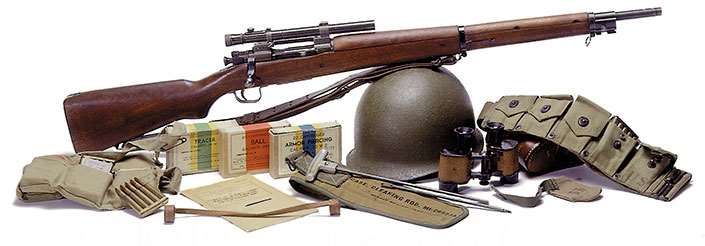
Nicholls’ share in the fight on the slopes of 5,000-ft. Mount Cairo included duty as an outpost guard. His hut was about halfway up the mountain, under close enemy observation. “We could get water, ammunition and rations only at night. We dug shallow foxholes and, at night, we’d cover them with shelter-halves to keep out rain and cold; but in the morning we’d have to roll them up and get ’em out of sight.”
Nicholls fought, too, in “The Battle of the Clouds,” on 3,000-ft. Mount Sammurcro. It took 10 hours for his company to climb the mountain. Some of the way they had to use ropes, scaling 60-degree slopes. A major German counterattack hit them just after they had established their position on top of the mountain. They met that attack with hand grenades, and, when the supply of grenades ran short, with rocks. They repulsed the attack and captured 15 Germans in the process. One prisoner asked about the “T” patch on the shoulders of his captors. “Texas,” he said. “Oh, Texas! Hoot Gibson, Tom Mix, Gene Autrey, Buck Jones!” replied the German. “He named more famous Texans than I could name myself!” Nicholls related.
Nicholls liked the Tommy gun for his behind-the-lines ventures. “When you need to shoot on that kind of a mission, you’re usually so close to your target it doesn’t make much difference whether you aim or not. What you want then is a fast burst, to mow the other guy down before he can mow you … . But aimed fire does pay off under other conditions. Its superior marksmanship that gives us the edge over the Germans in this foxhole fighting. Good riflemen can make it mighty unhealthy for Jerry to man a gun or stick his head up—and while he’s pinned down, we can advance.”












